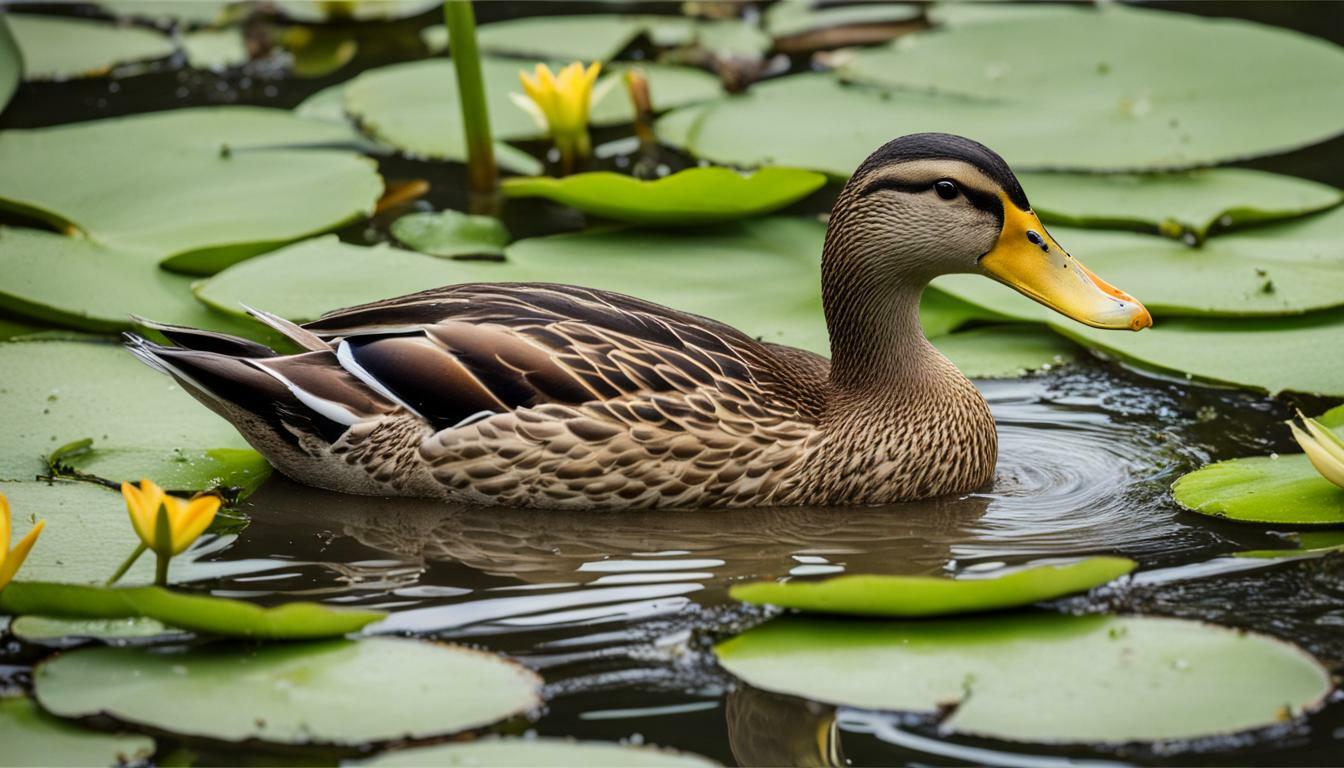Can Ducks And Rabbits Live Together? Find Out Here!

Daftar isi:
Having both ducks and rabbits as pets can be incredibly rewarding. Their unique personalities and behaviors make them fun companions. However, many owners wonder if these two species can live together harmoniously. With proper precautions, ducks and rabbits can cohabitate without issues. This guide will cover everything you need to know about housing ducks and rabbits together.
Which Breeds of Ducks and Rabbits Get Along?
Not all duck and rabbit pairings will work. To set your mixed flock up for success, choose breed combinations wisely.
Best Duck Breeds for Rabbits
For rabbits, select calm, non-aggressive duck breeds. The following are good options:
- Call Ducks: Small and gentle, Call ducks rarely exhibit aggressive behaviors. Their tiny size prevents them from intimidating rabbits.
- Cayugas: This moderate-sized duck breed is very docile and gentle. They tend to be non-confrontational.
- Runner Ducks: Excellent foragers, Runner ducks focus more on exploring than confrontation. Their foraging gives rabbits space.
- Welsh Harlequins: Welsh Harlequins are calm and non-aggressive. Their laid-back nature makes them ideal for rabbits.
Avoid loud, bold duck breeds like Pekins or Muscovies that may stress more sensitive rabbits.
Best Rabbit Breeds for Ducks
For ducks, pick mellow rabbit breeds that won’t startle or chase ducks. Great options include:
- Flemish Giants: Calm temperaments and moderate energy levels work well with ducks.
- English Lops: Laidback and docile, these giant bunnies are unphased by ducks.
- Silver Fox: Gentle and tolerant, Silver Fox rabbits remain relaxed around rambunctious ducks.
- American Sables: Their friendly, social nature helps them readily accept ducks.
High-strung reactive breeds like Rex rabbits are ill-suited for cohabitation with ducks. Stick to chill rabbits.
Housing Considerations for Ducks and Rabbits
To allow ducks and rabbits to peacefully coexist, their housing needs to accommodate both species. Important factors to consider include:
Enclosure Size
Ducks and rabbits need adequate space to prevent territorial issues from developing. Provide at least 10 square feet per duck and 8 square feet per average-sized rabbit as a minimum.
Cleanliness
Wet, dirty conditions from ducks can cause health issues for rabbits. Spot clean daily and change bedding frequently to keep their shared space clean. Provide rabbits with elevated areas to stay dry.
Climate Control
Rabbits are sensitive to temperature extremes that ducks tolerate well. Ensure their enclosure has adequate heating and cooling to maintain temperatures between 60-80°F.
Escape Proofing
Ducks and rabbits have different containment needs. Use secure fencing on the sides and roof to keep ducks from flying or climbing out. Prevent digging with galvanized metal mesh buried under the ground.
Zoning
Create “duck only” and “rabbit only” zones to allow each species their own space for sleeping and eating. This prevents resource-guarding issues. Provide hide boxes, tunnels, and perches to maximize vertical and horizontal space usage.
With thoughtful planning, you can design a living space that promotes harmony between ducks and rabbits.
Introducing Ducks and Rabbits
Making proper first impressions between unfamiliar ducks and rabbits is critical. Rushing introductions can trigger aggressive or fearful behavior that permanently damages their relationship. Follow these best practices:
- House ducks and rabbits separately at first, but allow them to see, hear and smell each other. This lets them gradually become accustomed to their new cohabitant.
- After a 2 week acclimation period, do short, supervised meet and greets in a neutral space. Watch closely for signs of aggression or fear. Separate them if issues arise.
- Once they appear comfortable mingling in short periods, allow increasingly longer interactions. Provide distraction activities like scattering treats to prevent conflicts.
- Only house them unsupervised once each animal appears fully relaxed and non-reactive around the other species.
With patient, gradual introductions, ducks and rabbits can learn to live in harmony together.
Signs of Stress in Mixed Duck-Rabbit Enclosures
Even compatible ducks and rabbits may struggle to adjust to cohabitation. Watch for these indicators of stress:
In Ducks:
- Excessive fearful vocalizations
- Wary body language and avoidance
- Aggression towards rabbits
- Decreased preening leads to messier feathers
- Pacing and attempts to escape
- Reduced eating/drinking
In Rabbits:
- Aggression like lunging, chasing, or nipping
- Thumping back feet in warning
- Sitting in a hunched position for long periods
- Pulling out own fur
- Grinding teeth
- Loss of litter box habits
- Loss of appetite
If stress signals persist, separate the ducks and rabbits. Reassess their environment and slowly reintroduce them later.
Making Life Together Harmonious
With the right care, ducks and rabbits can live congenially together. Here are some tips:
- Feed them separately to prevent resource guarding. Provide identical food in multiple spots.
- Give each animal their own secure nesting space. This eliminates competition for prime real estate.
- Clean enclosures frequently to minimize odor buildup that can induce territorial behaviors.
- Ensure adequate space for exercise and foraging since boredom causes problems. Rotate safe outdoor time.
- Provide enrichment activities like treat puzzles and toys to redirect energy away from confrontations.
- Gently handle both species frequently so they become comfortable around each other.
- Avoid overcrowding by maintaining similar numbers of ducks and rabbits. Odd numbers generally work better than same-sex pairs.
- Monitor for emerging signs of discord and separate promptly. Retry cohabitation after issues are resolved.
With vigilance and proactive mitigation of stressors, ducks and rabbits can live in remarkable harmony.
FAQs About Housing Ducks and Rabbits
Many owners have additional questions about safely mixing these two species. Here are answers to some frequently asked questions:
Is it Okay to Keep Baby Ducks and Baby Rabbits Together?
Yes, young ducklings and kits can be raised together successfully. Introduce babies at 4-6 weeks old once they are eating solid food and have stronger immunity. Closely supervise their initial interactions. Provide multiple food, water and hiding spots to avoid competition.
How Much Space Do Ducks and Rabbits Need for Cohabitation?
Aim for a minimum of 10 square feet per duck and 8 square feet per average-sized rabbit. Bigger is always better to minimize territorial behaviors. Also utilize vertical space with platforms, perches and tunnels. An outdoor run allows alternating their time indoors and outdoors.
What’s the Best Coop Bedding for Ducks and Rabbits?
Absorbent beddings like aspen shavings work well. Place hay in rabbit areas only to stay dry. Avoid dusty, aromatic or treated beddings. Spot clean soiled areas frequently and do full changes weekly to keep their shared home clean.
Can Ducks and Rabbits Share Food and Water?
It’s best to offer identical food and water sources placed in multiple areas to avoid resource guarding. Scatter feed to encourage natural foraging. Use heavy waterers that attach to avoid spilling. Position water off the ground for rabbit safety.
How Do I Bond Ducks and Rabbits Together?
Patience and slow introductions allow bonding to occur safely over time. Let them gradually grow accustomed to each other’s presence and scents before face-to-face meetings. Reward peaceful interactions with treats. Repeat exposure while minimizing competitive situations until they establish a tolerant relationship.
With preparation and vigilance, ducks and rabbits can become trusting, amicable companions. Don’t hesitate to separate them if signs of discord arise and try the bonding process again later. While cohabitation takes effort, the delight of a blended duck and rabbit home is well worth it.
Final Thoughts
Housing ducks and rabbits together can work beautifully when done thoughtfully. Choosing compatible breeds, providing adequate space, slowly blending them, and mitigating stress is key to success. Monitor for emerging issues, never force interactions, and separate if needed. With time, patience and effort, ducks and rabbits can become trusted friends and enjoy an enriched life together. The joy of watching two different species bond is a truly special experience.
Welcome. I’m Adreena Shanum, the proud owner of this website, and I am incredibly passionate about animals, especially poultry. I founded adreenapets.com as a labor of love, stemming from my desire to share my knowledge and experiences with poultry enthusiasts worldwide.




